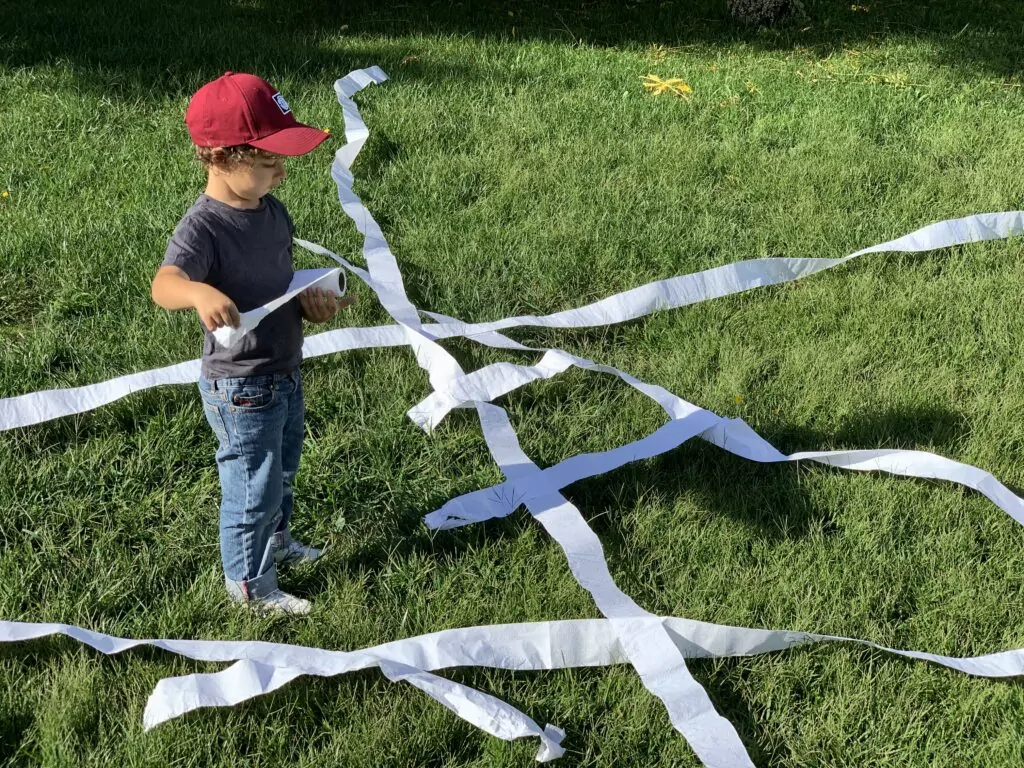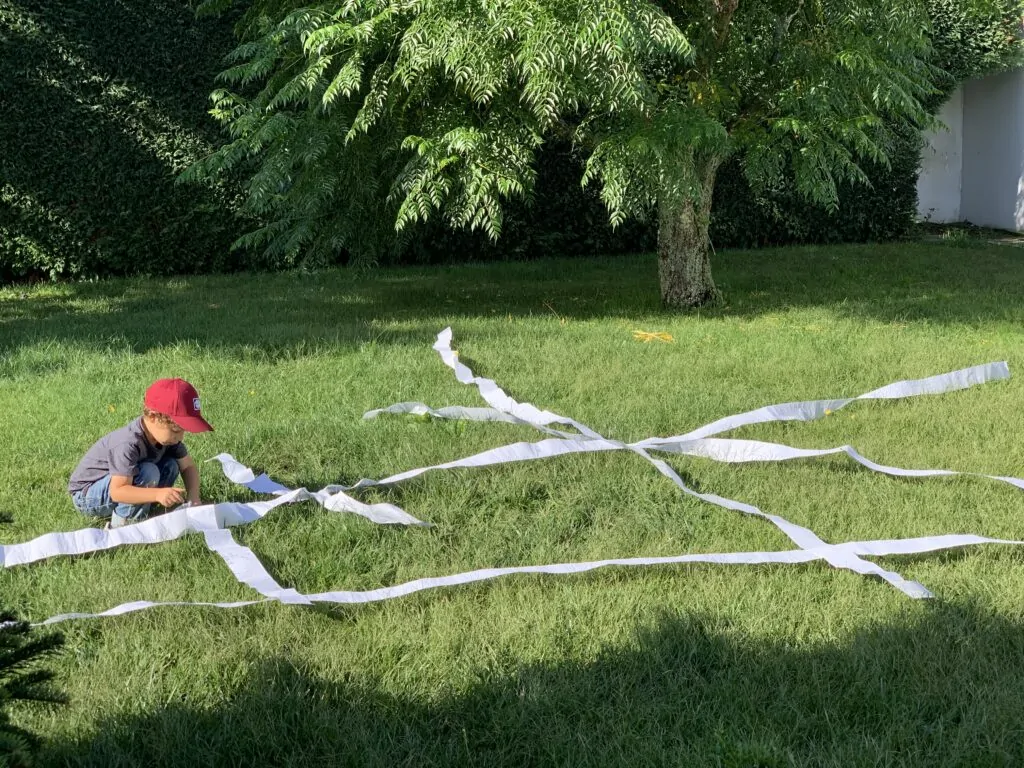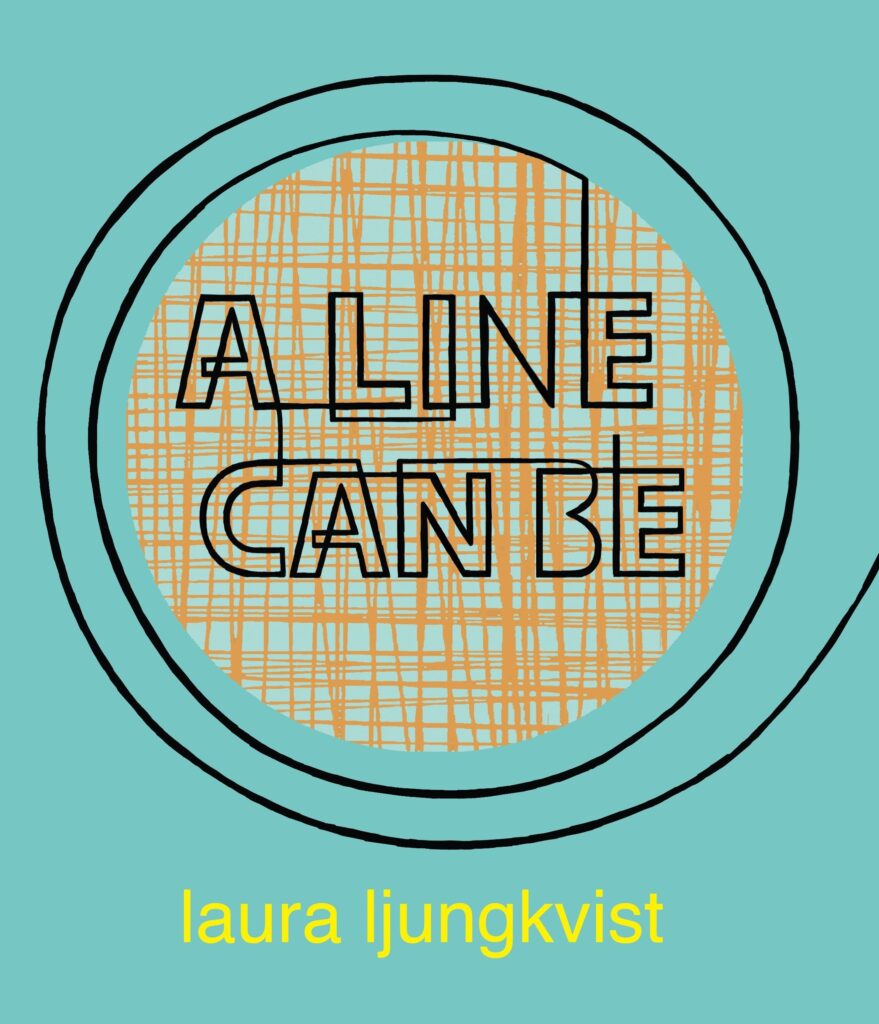Our perception of line varies according to the scale of our experience. One thing is to interact with a line on the confined space of a piece of paper, and another thing is to follow the continuous line in a highway.
With this Play Invitation, children can create lines in large scale through a multi-sensory experience that can develop their motor skills, visuo-spatial ability while exploring concepts like long, fragile, extension, distance, and interception.
What Could Lead Us to This Play Invitation
- Children have been building structures with tri-dimensional pieces;
- Children have been experimenting with different lines in their drawings, giving them meaning;
- Children are excited about playing on a large scale and making large movements.
Materials Needed
• Toilet paper rolls.
Setting up this Play Invitation
- Organize children in small groups at a time (max. six children).
- Have at least three paper rolls for each child.
- Choose an outside space or a big area so the lines can be really long.
Tip: If the paper start to fly, because of wind conditions, have a basket with small stones on hand so children can use them to hold the paper down.
How to create the lines
- invite children to explore the potential of this material to create large-scale lines.
- During the Play Invitation, you can focus on:
– The interactions between children;
– How children connect with the fragility of the paper;
– How scale influenced the movement of the lines;
– How did the space was occupied by the lines.


Optional Next Step: Invite children to imagine these lines are a map. What is this place and where do those lines can take us?
How to Nurture the Natural Unfolding of the Child’s Identity During This Play Invitation
- Children have the right to explore materials in an expansive and open way. There are certain materials and concepts that become difficult to explore within a classroom. Therefore, rather than avoiding them, we must offer opportunities for children to experiment and play with them. Some concepts such as big, high, deep, freedom, structures, flow, wind, liquid, and quantity, are just a few examples.
The Academic Learning Opportunities
- MATH: Describe and compare lengths and shapes.
- LANGUAGE: Engage in exploratory and imaginative play and elaborate on an imaginative idea.
- PHYSICAL: Build on their motor skills and visual-spatial relationships.
- ART: Explore one of the elements of art – Line – in an original and tri-dimensional way.
Extensions
- Over a table place sewing thread in various colors and invite children to explore what type of lines can be created on a smaller scale.
Book Recommendation

A playful book that invites children to follow a line that shows many possible shapes.


